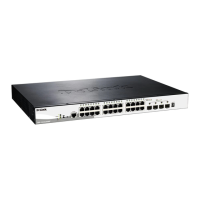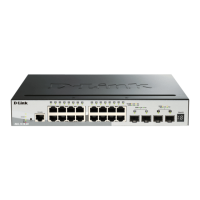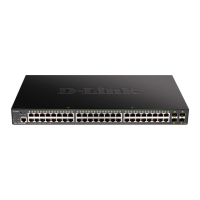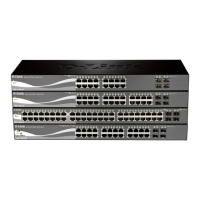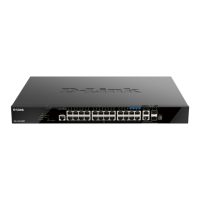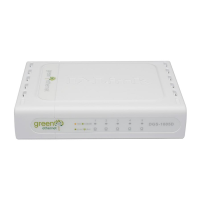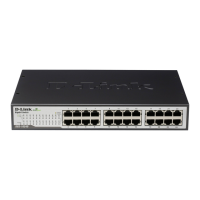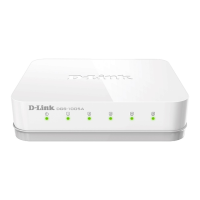DGS-1510 Series Gigabit Ethernet SmartPro Switch Hardware Installation Guide
35
To find out what the IP address of the Switch is, we again need to access the Switch management
interface through the CLI. Take note of the following example.
Switch> show ip interface
Interface vlan1 is enabled, Link status is down
IP Address is 10.90.90.90/8 (Manual)
ARP timeout is 20 minutes.
Proxy ARP is disabled
IP Local Proxy ARP is disabled
gratuitous-send is disabled, interval is 0 seconds
Total Entries: 1
Switch>
In the example above the show ip interface command is used to display information about the IP
interfaces created on this Switch. In this display we see that the IP address for this switch is
10.90.90.90 and the CIDR notation for the subnet mask is /8 which translates to 255.0.0.0. This
information can however be modified, as show below.
Switch> enable
Switch# configure terminal
Switch(config)# interface vlan 1
Switch(config-if)# ip address 192.168.1.1 255.255.255.0
Switch(config-if)#
In the above example,
• We accessed the Privileged EXEC Mode by entering the command enable.
• Then we entered the Global Configuration Mode by entering the command configure
terminal.
• Then we entered the VLAN Configuration Mode of the default VLAN, which is VLAN 1, by
entering the command interface vlan 1.
• Then we changed the IP address of the Switch to 192.168.1.1 and the subnet mask to
255.255.255.0 by entering the command ip address 192.168.1.1 255.255.255.0.
SNMP Settings
The Simple Network Management Protocol (SNMP) is an OSI Layer 7 (Application Layer) designed
specifically for managing and monitoring network devices. SNMP enables network management
stations to read and modify the settings of gateways, routers, switches and other network devices.
Use SNMP to configure system features for proper operation, monitor performance and detect
potential problems in the Switch, switch group or network.
Managed devices that support SNMP include software (referred to as an agent), which runs locally on
the device. A defined set of variables (managed objects) is maintained by the SNMP agent and used
to manage the device. These objects are defined in a Management Information Base (MIB), which
provides a standard presentation of the information controlled by the on-board SNMP agent. SNMP
defines both the format of the MIB specifications and the protocol used to access this information over
the network.
The Switch supports SNMPv1, SNMPv2c, and SNMPv3. The administrator may specify which SNMP
version to use to monitor and control the Switch. The three SNMP versions vary in the level of security
provided between the management station and the network device.

